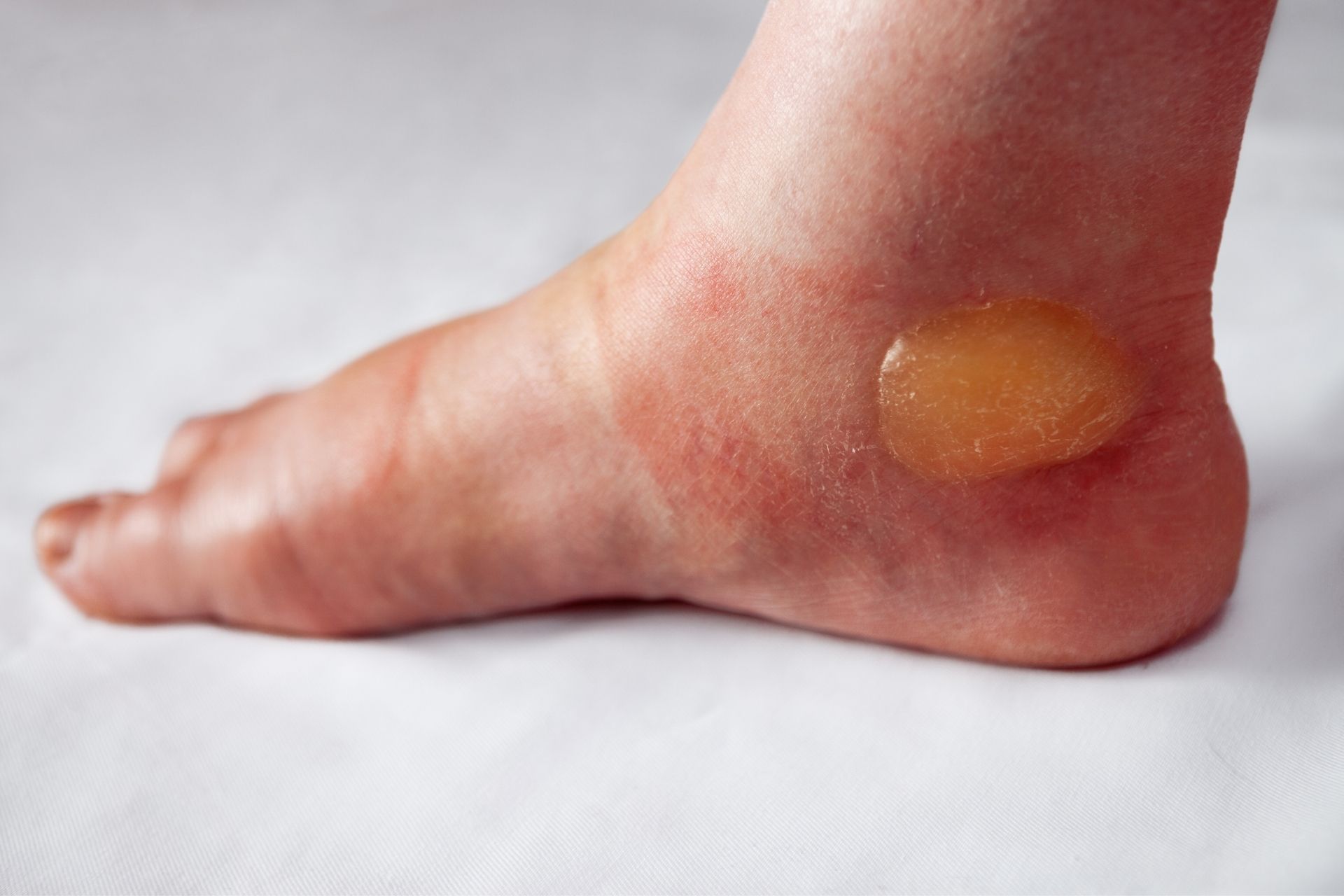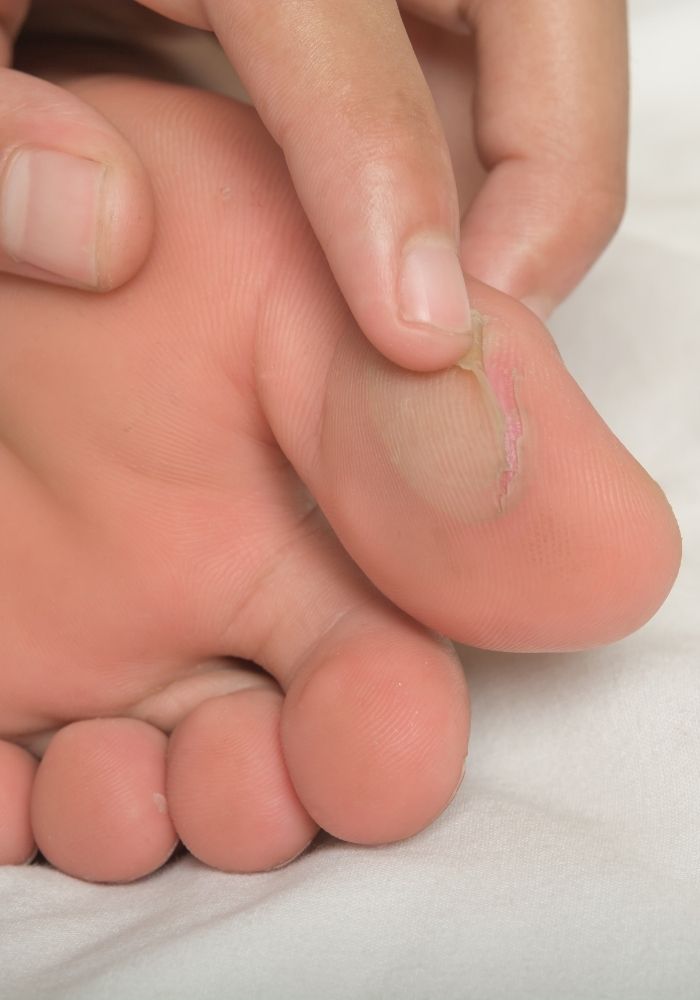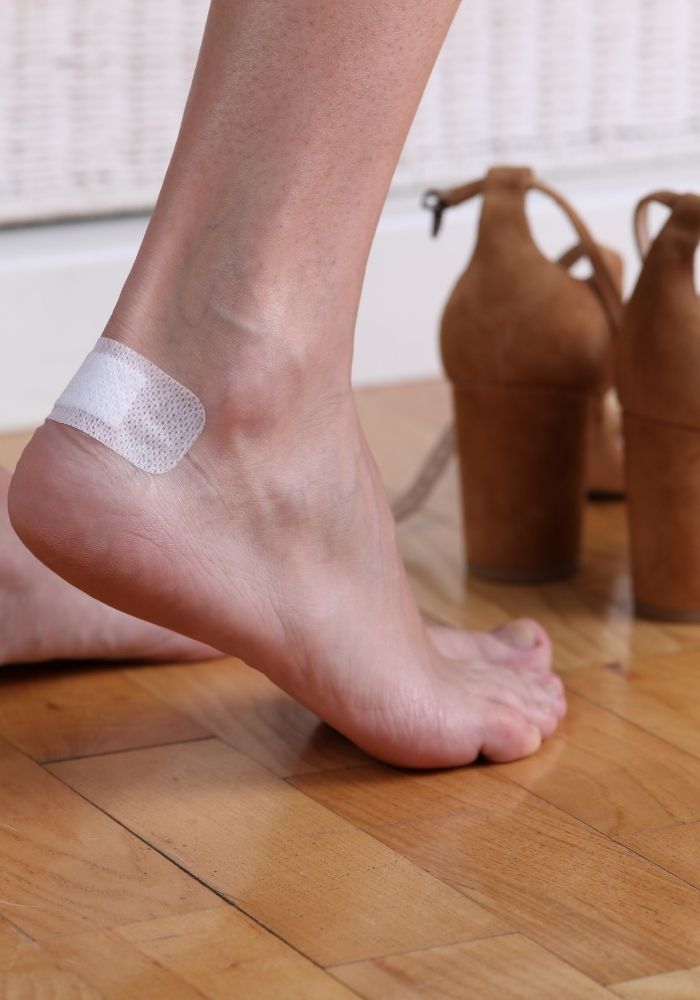foot blisters treatment
What are foot blisters?
Blisters are fluid-filled sacs that form in the skin’s top layer in response to injury and infection. Blisters are usually found over injured areas to protect them from further damage.
Blisters most commonly develop when the outermost layer is extremely thick, like on the hands or feet.
Blisters on the feet can cause pain because of the pressure placed on them by the nerves and blood vessels. It can be very painful and disabling depending on the location of the blister.

What are the causes of blisters on feet?
Blisters on the feet can be caused by:
Friction and pressure
Most blisters occur when there is friction and pressure.
Burning
The body can create a blister to protect the underlying tissue from being damaged when the skin is burnt.
Freezing
Extreme cold can lead to frostbite and freezing of the skin cells. This causes a blister to form in order to retain heat.
Contact dermatitis
Skin irritations can cause contact dermatitis, or skin inflammation. Contact dermatitis may progress to blistering if the skin is exposed for too long.
Health conditions
Blisters can be caused by any condition that weakens the skin’s outer layer. Some infectious diseases and disorders can cause blisters.
Broken blood vessels
A blood blister occurs when tiny blood vessels within the epidermis of your skin burst, which can sometimes leak blood into tissue layers. When the skin is pinched or crushed, blood blisters are more common.

What is the treatment for blisters?
The best thing to do for feet blisters is to just leave them be. With basic care, most blisters will heal within a few days.
Clear and bloody blisters should be left intact. Blisters are an effective defense mechanism. They reduce pressure and protect the underlying tissues.
Blisters can also be used to seal damaged tissue and stop bacteria, viruses, or fungus from entering the wound.
A person should not put pressure on a blister if it has developed. The area around the blister should be gently washed with soapy water after it has drained. Then, people should cover the area with a dry, sterile, and breathable dressing such as gauze, or a loose bandage.
It is important to wash your skin thoroughly after exposing to chemical or allergic irritants.

Experiencing issues with your foot, ankle or knee?
Get in touch with our Foot Clinic today and book an appointment right away.
